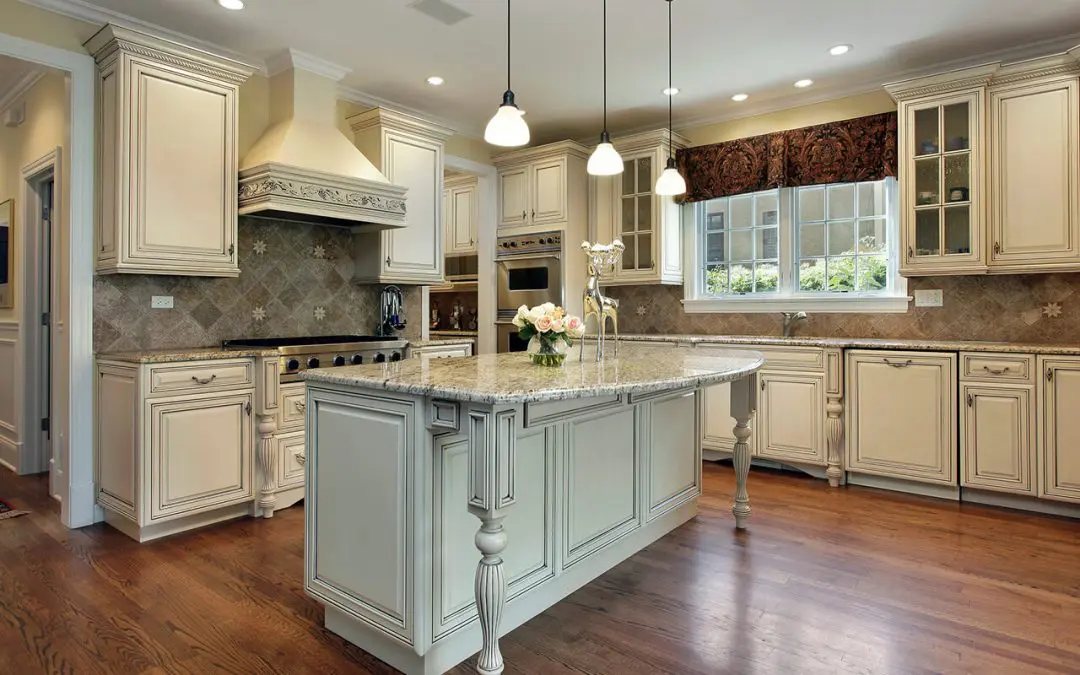Lighting plays a crucial role in creating a functional and inviting kitchen. Strategic lighting enhances the overall ambiance and makes cooking and cleaning tasks easier. Here are several strategies to improve kitchen lighting and transform your space into a well-lit haven.
Improve Kitchen Lighting with Layers
One of the most effective ways to brighten your kitchen is by incorporating a layered lighting approach. Start with ambient lighting to provide a general illumination that fills the room. This can be achieved through ceiling-mounted fixtures, recessed lights, or pendant lights. Next, add task lighting to illuminate work areas such as countertops, stovetops, and sinks. Under-cabinet lights and adjustable track lighting are excellent choices for task lighting. Finally, consider incorporating accent lighting to highlight architectural features, artwork, or decorative elements. This can be achieved with LED strip lights or small spotlights.
Choose the Right Fixtures
Selecting the right fixtures is essential for achieving the desired lighting effect. Pendant lights and chandeliers can serve as focal points while providing ample illumination for your kitchen island or dining area. Opt for recessed lighting or flush-mounted ceiling fixtures for a sleek and modern look. If you prefer a more traditional style, consider decorative sconces or vintage-inspired fixtures. Ensure the fixtures complement your kitchen’s design and adequately cover all areas.
Opt for Adjustable Lighting
Adjustable lighting allows you to customize the brightness and focus of your lighting based on your needs. Dimmable lights are beneficial for creating different moods or adjusting the lighting for various tasks. Dimmer switches can be installed for overhead lights, and some under-cabinet lights come with adjustable brightness settings. Additionally, adjustable track lighting or swivel fixtures enable you to direct light exactly where needed, making it easier to illuminate specific work areas or highlight particular features.
Improve Kitchen Lighting with Natural Light
Maximizing natural light can greatly improve the overall brightness of your kitchen. Keep windows unobstructed by heavy curtains or blinds, and consider installing sheer window treatments that allow more light to filter through. Mirrors can also help reflect and amplify natural light, making the space feel brighter and more open. For kitchens with limited natural light, consider adding a skylight or solar tube to bring in additional daylight.
Incorporate Energy-Efficient Solutions
Energy-efficient lighting options help reduce your electricity bills and contribute to a more sustainable home. LED bulbs are popular due to their longevity and low energy consumption. They come in various color temperatures, allowing you to choose the right hue for your kitchen. Additionally, compact fluorescent bulbs (CFLs) are another energy-efficient option. Opting for these solutions can help you achieve bright, high-quality lighting while minimizing environmental impact.
Consider Color Temperature
The color temperature of your lighting affects the overall ambiance of your kitchen. Warm white light (2700K) creates a cozy and inviting atmosphere, while cool white light (3500K) offers a cleaner, more energizing effect. For tasks that require precision, such as chopping vegetables or reading recipes, consider using cool white or daylight bulbs (5000K) for better visibility. Combining different color temperatures in various lighting layers can help balance functionality and aesthetics.
Improving your kitchen lighting involves a thoughtful combination of ambient, task, and accent lighting. With these strategies, you can transform your kitchen into a space that looks great and supports all your culinary endeavors.
Kitchen Lighting FAQs
How can I incorporate lighting into kitchen cabinets?
Under-cabinet lighting is an excellent way to brighten your countertops and enhance visibility. LED strips or puck lights mounted underneath cabinets provide direct light where it’s needed most. For a seamless look, choose fixtures that blend with the cabinet design or install them with a low-profile mounting system.
What are the pros and cons of installing a skylight for kitchen lighting?
Skylights can significantly increase the natural light in your kitchen, making it feel more spacious and vibrant. They also help reduce reliance on artificial lighting during the day. However, installing skylights can be expensive and require additional maintenance to prevent leaks or dust buildup. Proper installation and sealing are essential to avoid potential issues.
What should I consider when choosing pendant lights for my kitchen island?
When selecting pendant lights for a kitchen island, consider the scale and style of the fixture to ensure it complements the overall design of your kitchen. The height you hang the pendants should be adjustable to provide adequate illumination without obstructing views. Additionally, choose a fixture that provides sufficient light for the size of the island and any tasks performed there.
What are the latest trends in kitchen lighting design?
Some current trends in kitchen lighting design include integrating smart lighting systems that can be controlled via smartphone apps, using pendant lights with unique designs to create focal points, and incorporating mixed materials like metal and glass in fixtures. Additionally, there’s a growing interest in energy-efficient and eco-friendly lighting solutions.
Bronze Star Home Inspections provides professional home inspection services for customers in the Dallas-Fort Worth Metroplex. Contact us to schedule an appointment.

